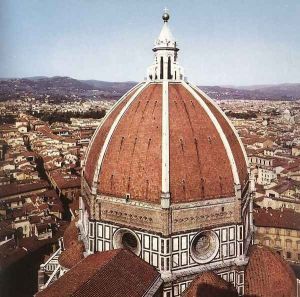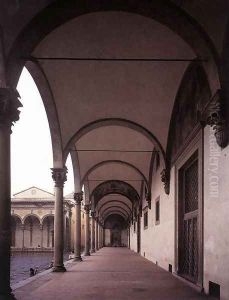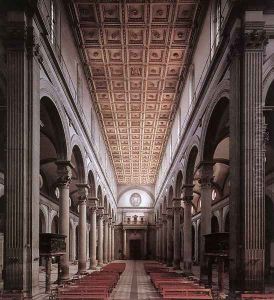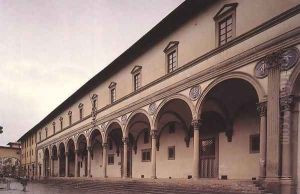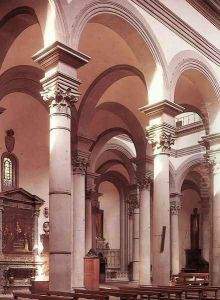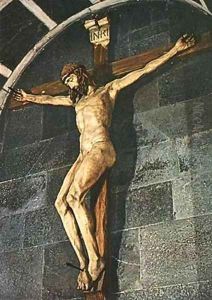Filippo Brunelleschi Paintings
Filippo Brunelleschi was a key figure in architecture during the Italian Renaissance, born in 1377 in Florence, Italy. He was the second of three sons born to Brunellesco di Lippo, a notary, and Giuliana Spini. Although initially trained as a goldsmith and sculptor, Brunelleschi is most famously known for developing a technique for linear perspective in art and for engineering the dome of the Florence Cathedral, which is considered his masterpiece.
Brunelleschi's early career was marked by his participation in the competition in 1401 to design a new set of bronze doors for the Florence Baptistery. He submitted a panel depicting the Sacrifice of Isaac, which is now considered a masterpiece of early Renaissance sculpture, but ultimately lost to Lorenzo Ghiberti. This defeat did not deter him, however, and it led to a pivotal shift in his career towards architecture.
From about 1418 to 1436, Brunelleschi worked on the dome of the Florence Cathedral (Santa Maria del Fiore), which had been left unfinished for many years due to the technical challenges of constructing such a large dome. His ingenious solutions, which included a unique herringbone brick pattern and a double shell design, allowed the dome to be constructed without the need for the traditional wooden supporting framework. This not only represented a breakthrough in architectural design but also in engineering, as the dome was the largest of its time and remains a symbol of Renaissance ingenuity.
His other architectural works include the Ospedale degli Innocenti (Hospital of the Innocents), which is regarded as a notable example of early Renaissance architecture, and the Pazzi Chapel, situated in the cloister of the Basilica di Santa Croce in Florence. His design principles, particularly the mathematical harmony and geometric forms he used, became foundational to Renaissance architecture.
Brunelleschi's understanding of mathematics and his application of classical principles greatly influenced the architectural landscape of his time and beyond. His work also had a significant impact on contemporaries and future generations of artists and architects, such as Michelangelo and Leon Battista Alberti.
Brunelleschi died on April 15, 1446, in Florence. His innovative contributions to engineering and architecture made him an icon of Renaissance creativity, and his techniques of creating perspective have influenced artists for centuries. He is buried in the Duomo in Florence, a fitting resting place for the man who gave the city its most iconic landmark.
